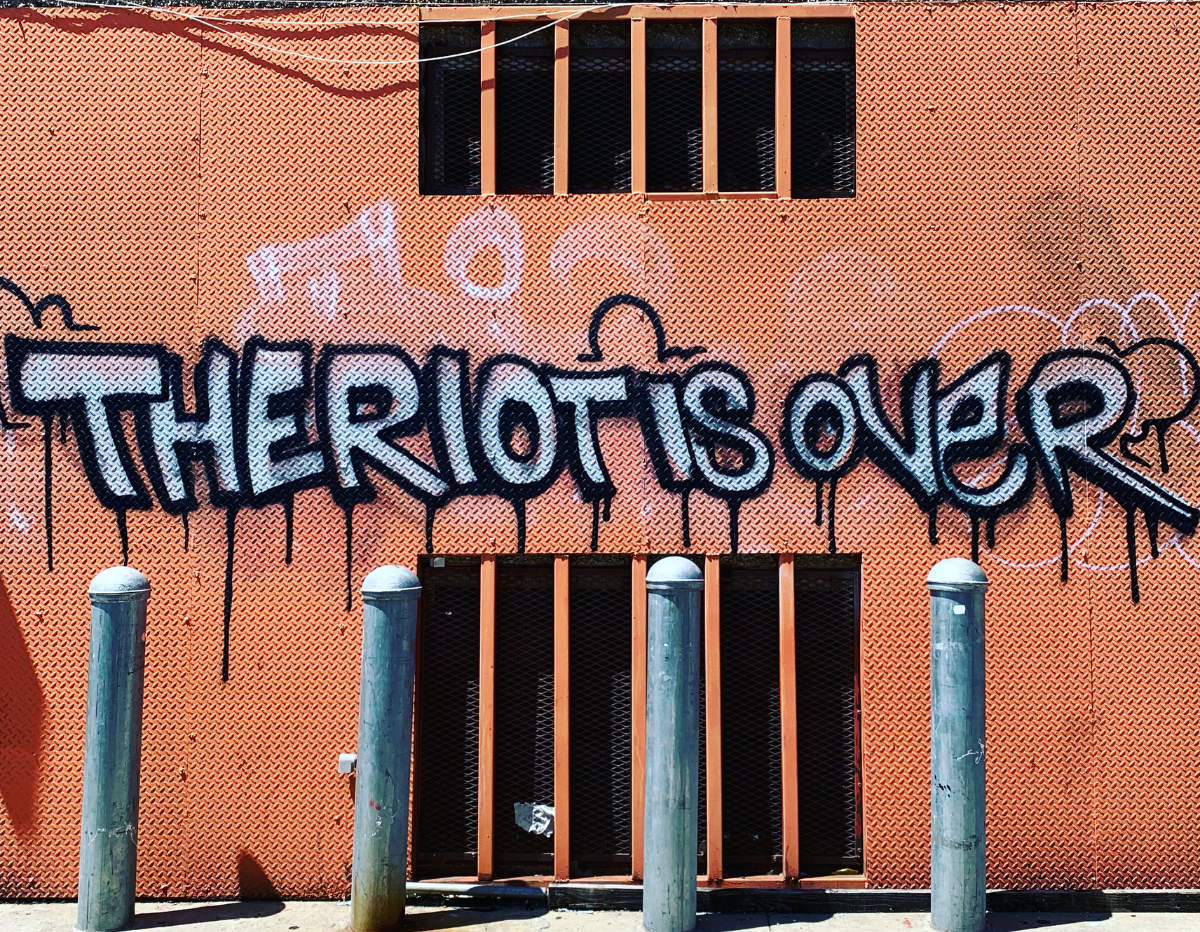
The night before Thanksgiving, legendary Newark street peacemaker Sharif Amenhotep found himself surrounded by legions of city police officers as they sought to confiscate his mini-bus from his vending area on Branford Place and Broad Street.
The incident got particularly dicey when officers appeared to be cutting or doing something to the underside of the vehicle, according to observers. Amenhotep, upset about what was happening, got under the vehicle to see what was being done to it. For reasons that need to be explained, the police decided to arrest Amenhotep, and they got violent in the process. Sharif suffered a broken foot — in two places — as the police put him in handcuffs.
In a different city, without a community-centered public safety ecosystem, things could’ve gone off the rails here. Instead, some of the critical features of an ecosystem surfaced: engagement of the full community; political leadership; bridge building between community and police; and more.
The community, outraged by what they were witnessing, challenged the police officers’ actions. Leadership from both the system and community stepped forward: Deputy Mayor Rahman Muhammad, a labor organizing veteran, and former Newark Anti-Violence Coalition member Tyrone “Street Counsel” Barnes pled with both the police and an angry public. Their poise helped avert an insurrection that could have led to numerous people getting hurt while harming the resurging image of the city immeasurably.
There are things about the incident still bothering me. To start, the mini-bus appeared to be legally parked according to local law. So what were the police doing? Second, Amenhotup is arguably one of the best-known anti-violence activists in Newark. Tragically, he’s the father of a murder victim: his daughter, Sanaa. But that has left him fully committed to peace.
Further, how is it possible that NPD didn’t acknowledge the presence of Deputy Mayor Muhammad? If the community hadn’t done so, things could have become exponentially worse.
What happened that night doesn’t align with a city and a department going through historic police reform. Nor does it work for a community that has embraced violence intervention, with powerful results — a 50% drop in murder.
Haven’t these efforts garnered national attention as a number of cities are now examining how they can employ similar strategies to combat violence in their respective cities?
Violence intervention is a critical part of the community-centered public safety ecosystem. But the ecosystem is only effective when all the complicated parts of it are working together, and adjusting for changing conditions—and that especially includes the police! We saw that in the 2020 Uprisings, when the community and the police worked together to avert violence at the old first precinct. This spirit showed again recently when two police officers were wounded by a man with a rifle in a mental health crisis. Violence interventionists not only assisted with critical crowd control efforts and follow-up services, they also helped move people from the building where the shots were coming from to safety in a nearby school and attended to their anxieties.
With a well-established, strengthening ecosystem in place, how does what happened to Amenhotep even take place?
It shouldn’t have!
At all!
So the real question for so many of us is: Which Newark Police Department is “real”? The one that went through the entire year of 2020 without firing a single shot? Or the one that offered little in the way of accountability when one of its undercover officers killed an unarmed Carl Dorsey on New Year’s Day 2021?
In the name of safety, integrity, accountability, and public trust, Newarkers really want to know: “Will the ‘real’ Newark Police Department please stand up?!?
If there is to be a protest condemning what happened, the organizations and leaders of the ecosystem should unite and demand that the police respect their work and presence in the community.
The nuances of the incident should be taken up in an investigation by the new Civilian Complaint Review Board. This incident and other incidents of inappropriate police behavior should also regularly inform our Trauma To Trust program. And, as always, the community must play a role in how this matter gets resolved. In Newark, the community truly aims to own their public safety.
Hands off Sharif Amenhotep! Drop the charges!
Stop Police Brutality! Peace in the Streets!



